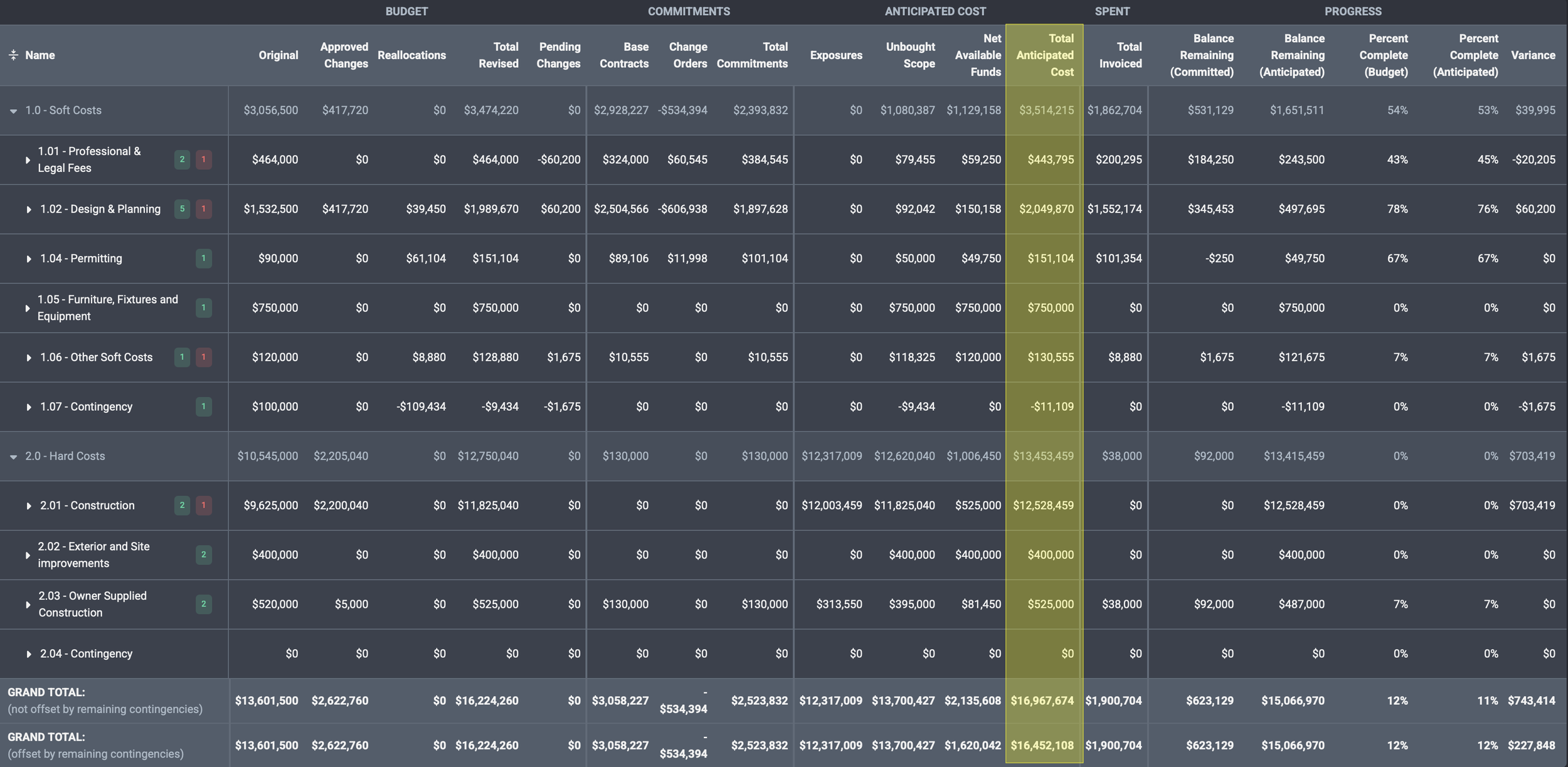Where Is This Project Headed?
Most people look at a cost report and ask: How much have we spent? But that’s not the right question.
What you really need to know is: Where are we going to land?
That’s why I always focus on one number—Total Anticipated Cost. If you're not looking at this column, you’re guessing. This is the number that tells you the truth, even when the rest of the report looks fine.
First, Understand the Three Main Buckets
Every cost report has three sections. They each serve a purpose, but they tell different stories:
Budget – What you planned to spend.
Commitments – What you’ve contracted to spend.
Projections – What you expect to spend when the dust settles.
The budget is your starting point. The commitments are what’s locked in. But the projections? That’s where the surprises live. That’s where smart decisions come from.
What Is Total Anticipated Cost?
Total Anticipated Cost is the most important number in the projection section. It’s the best estimate of where each line item is actually going to end up—whether or not it’s been approved, committed, or even fully priced.
Here’s the logic I use in every project:
Total Anticipated Cost = The greater of:
Revised Budget + Pending Changes
Commitments + Exposures (when the budget can’t absorb them)
Invoiced Amounts
Sounds simple, but this formula changes the whole game. It forces you to lead with what’s actually happening, not just what’s been written down or signed off on.
Why “Greater Of” Matters
Let’s say you’ve got a line item where the trade already invoiced more than what’s in the budget. Or maybe you’re tracking a $50K exposure that hasn’t been processed yet.
You could wait until that number gets approved. Or—you could recognize that if you don’t plan for it now, you’ll be blindsided later.
That’s why we take the greater of those values. Because that’s the most honest view of where we’re heading.
Why This Column Is Everything
It looks forward, not backward. Most reports track what's already happened. This one tells you what’s coming.
It captures the real risk. Pending change orders. Invoicing gaps. Exposures not yet in the budget. This column pulls them all together so nothing slips through the cracks.
It gives you time to act. If this number is creeping up, you still have options. If you wait until the budget is updated or the invoices hit, it’s too late.
It keeps your team honest. Just because a cost isn’t on paper yet doesn’t mean it’s not real. This column forces visibility and accountability.
Why Most Teams Get It Wrong
This is not an easy column to build. You need to:
Understand where each number comes from
Track changes before they’re official
Handle exposures and budget limits
Deal with invoicing that runs ahead of commitments
That’s why I don’t rely on spreadsheets alone. I use professional construction financial software to track this accurately. It’s not about the tools—it’s about the thinking. But the right tools help enforce that thinking every time.
For Owners Reading This
If someone gives you a cost report and you’re not sure what to look at—start here.
Find the Total Anticipated Cost column and ask: “What’s driving this number up, and how are we dealing with it?”
That one question tells you more than any dashboard, any summary, or any fancy chart. It tells you who’s actually leading the job—and who’s just tracking it.


